SUMMARY
This is AI generated summarization, which may have errors. For context, always refer to the full article.
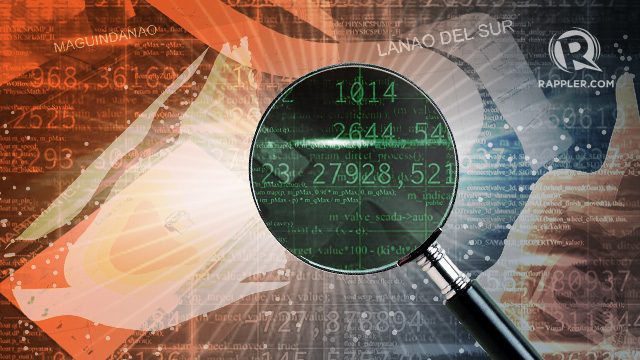
MANILA, Philippines – In the 2007 elections, results for the Senate race from the province of Maguindanao generated a huge controversy after the province gave the administration’s Team Unity (TU) bets a whopping 12-0 sweep.
The administration win that year was even more remarkable because not a single vote from 20 of the 22 municipalities in the province went to the Genuine Opposition (GO).
Most controversial of all was then Ilocos Sur Governor Luis Singson ranking first in the province, on May 25, 2007 – despite not having roots there.
The Maguindanao provincial count also significantly digressed from the final tally where Singson ranked 25th nationwide. (READ: Guns, Fealty, and Money)
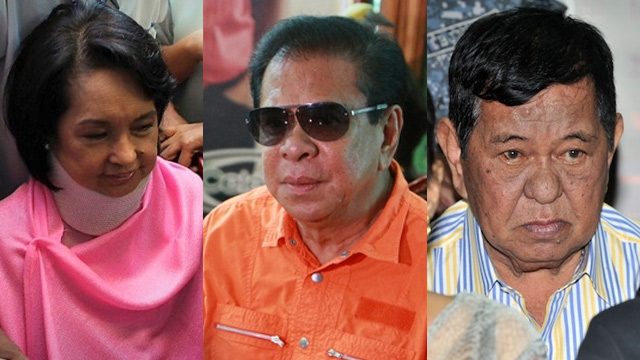
There were other notable things about the Maguindanao vote that year: a turnout of at least 90% for all of the 22 municipalities – staggeringly high compared to the rest of the country – and the loss of critical election paraphernalia attesting to the results which caused the national canvass for senators to drag beyond the end of May 2010. (READ: Bedol Collected Poll Documents Before ‘Losing’ Them)
“They did it with impunity,” then election lawyer for the opposition Leila de Lima told me in an interview weeks after the elections.
Maguindanao province at the time was virtually under the control of then governor Andal Ampatuan Sr who considered himself the vassal of whoever was in Malacañang. A friend of the Ampatuan family told me when I visited the province weeks after the elections, “Whatever the President wants, he will follow.” For that election, the source noted, “12-0 is what Ma’am (then President Gloria Macapagal Arroyo) wants.”
Automation
The 2007 elections were the last manual elections the country had. In 2010, Philippine elections (both national and local) were finally automated.
Automation ushered in hopes of a cleaner and faster process. Instead of teachers painstakingly counting and recording each vote on paper returns until the wee hours in polling precincts, machines scanned ballots and transmitted the results in real time. (READ: How does the PH automated election system work?)
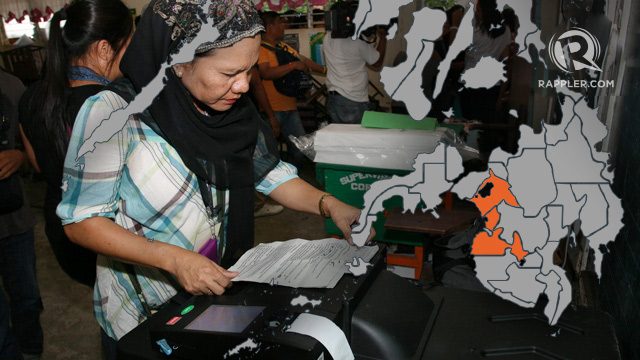
To illustrate, as of 9:12 pm of Tuesday, May 11, 2010 – a day after the polls – candidate Benigno Aquino III already exhibited a clear lead against rivals with 13,165,343 votes, against second placer Joseph Estrada, who had 8,425,937 votes.
As far as quick counts were concerned, and in comparison to how long it took to get the 12th senator proclaimed in 2007, that was really quick.
But the new system also introduced fresh concerns.
Were the machines counting the votes properly or were they the ones actually electing the country’s new leaders?
Precincts with uber-high turnout rates, failed transmission
Rappler analyzed the election data and revealed indicators of either potential cheating or machines somehow mis-counting the votes. We uncovered precincts which had abnormally high voting rates and whose results significantly digressed from national patterns.
- Most 100% turnout in ARMM, Cebu precincts
- Enrile, Zubiri win in precincts with 100% turnout
- Over-votes in past elections due to vote counting machine glitches?

We also reported about areas where transmission got worse in 2013.
That provinces that failed to transmit somehow coincided with areas that figured significantly in cheating incidents in the previous elections made us wonder if old problems persist.
But speculations aside, could the data give conclusive proof of cheating? Recent studies of electoral data in various countries indicate that this is possible.
Election health check
In 2012, a group of researchers from the Santa Fe Institute, a private, not-for-profit, independent research and education center in Santa Fe, New Mexico in the US, published a study which suggested that some kinds of election fraud leave a trace in the voting data.
Entitled, “Statistical Detection of Election Irregularities,” the Santa Fe Institute study analyzed voting patterns in various countries.
Among other things, the Sante Fe team compared voter turnout against percentage of votes for the winning party. Simplified, the study essentially said that the more precincts there are that exhibit high voter turnout and high level of preference for the winner, the higher the possibility of fraud.
The study described this as the “statistical fingerprints of election thieves.”
Maguindanao and Lanao
We decided to apply the same analysis to precinct-level election results data for the vice presidency in 2010.
It came as no surprise that the most distinctive graph that came out was that of Maguindanao province, which had been earlier identified as problematic. (See graph below.) Note that colors in the graph indicate density of precincts plotted within a particular area. The lighter the color the more precincts there are in that space.
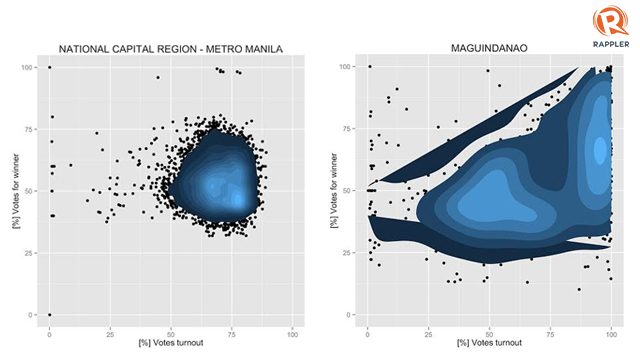
To us, it was very clear. That so many precincts in Maguindanao had almost complete attendance on election day and that a significant number of those voters also voted for the same person is anomalous. It indicates a high probability of cheating in the area.
Slightly similar to Maguindanao was the contour graph generated for Lanao del Sur, which was also described as a hotbed of cheating in the past.

The findings from the graphs conform with what we have seen of elections in Maguindanao and Lanao del Sur in previous elections.
For instance, in the 2009 ARMM special elections, international observers from the Asian Network for Free Elections (ANFREL) saw people filling up multiple ballots in some precincts in Maguindanao. (READ: the ANFREL report on the 2009 ARMM elections)
I personally joined one of the ANFREL teams when they spot checked different polling centers and precincts in Maguindanao in August 2009. We saw election officers allowing kids to vote and truckloads of voters being brought to polling centers.
We wondered: did these happen again in 2010 and 2013?
Compared to Lanao del Sur and Maguindanao, the maps for key metropolitan areas indicated a relatively healthy distribution of precincts by votes vs turnouts.
Clicking on the icons on the map below activates a sidebar on the left-hand side of the map that displays the graph for each province. Click on the graph to view the pop-up window that displays the larger image of the graph.
#PHVoteWatch: Eyes on each precinct, polling place
The above findings make it doubly important for the Comelec to make sure that all precinct level results are received by the Transparency Server and that all possible ways to audit the data are made possible.
It also makes it even more important for watchdog groups to monitor and analyze the results closely and compare the data with what is actually happening in the precincts and polling places.
Did people really troop to the polling precincts en masse in the areas with very high turnout rates or were golden hands voting in their behalf?
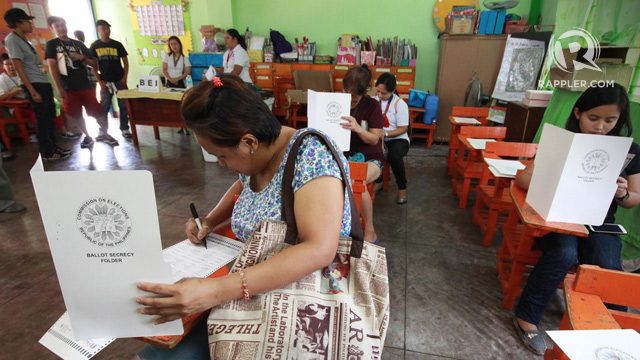
We need to be concerned when the machines don’t transmit to the Transparency Server, which receives results directly from the precincts via the vote counting machines.
We need to be concerned about differences between the results transmitted by the vote counting machines and the results of the random manual count.
We need to make sure that the audit is really random and that precincts audited are a representative sample. This way we can better assess how these will affect the actual outcome of elections.
Automation does not mean you only need to watch the system and check the code. On the contrary, precinct level poll watching remains absolutely necessary in an automated election.
Having eyes on the ground is important to validate the data that the machines will churn out during the canvassing. (READ: Poll watchdogs prepare for final stretch of 2016 elections)
This is what we are trying to do in partnering with watchdog groups for #PHVoteWatch. For this initiative, Rappler partners with the Parish Pastoral Council for Responsible Voting (PPCRV), the National Citizens’ Movement for Free Elections (Namfrel), the Legal Network for Truthful Elections (Lente) and other civil society groups. (READ: #PHVoteWatch: Report vote buying, other election wrongdoing)
Automation may not protect this country from cheating.
The good news, however, is that data make these issues more visible and transparent to those willing to look, analyze, and quickly compare what the system says against what actually happens on the ground. – with Russell Shepherd, Wayne Manuel and Michael Bueza/Rappler.com
Add a comment
How does this make you feel?
There are no comments yet. Add your comment to start the conversation.